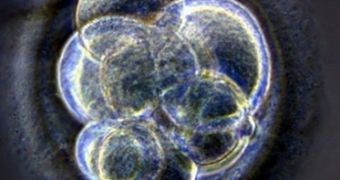You won't believe it, but there are women born with no vagina! A genetic condition, called Mayer-von Rokitansky-K?ster-Hauser syndrome (MRKHS), affecting one in 5000 women, induces the lack of vagina development during embryogenesis.
These patients can have a normal uterus, ovaries and external secondary sexual development, like breasts, but they cannot have sexual intercourse or give birth. If their ovaries are normal, they can achieve pregnancy through in vitro fertilization, but after that, they need a surrogate mother to bear the pregnancy and give birth.
"Usually the syndrome is diagnosed when they are young and they try to have sexual intercourse for the first time and it hurts," said Dr. Cinzia Marchese, a professor of clinical pathology and biotechnology at the University Sapienza in Rome. These women are many times too ashamed to discuss the issue with their parents when they are young and often "live the rest of their lives with no normal sexual life, even though they are normal women with normal feelings", she said.
Current methods to reconstruct a vagina are based on grafted skin or intestinal tissue, but this surgery is highly invasive, lengthy and painful, requiring a long time to grow a normal vagina mucosal wall.
But now, Marchese has managed to build brand new vaginas in two MRKHS women, using their own cells to get vaginal tissue in the lab for the first time. "She has got married and is living a normal life," said Marchese about a 28 years old patient who now has a healthy vagina. The other patient was a 17-year-old girl.
Marchese's team took cells by biopsy from where vagina should have been, to obtain vaginal mucosal tissue. The mucosal tissue covers the inside of the vagina, the mouth, digestive and breathing tracts. "What we do is to take a little biopsy of 0.5 centimetres from the place the vagina should be," said Marchese.
Using an enzyme, the researchers broke down the tissue and cultivated stem cells (immature type) to grow new, mucosal tissue on their own. "It takes about 15 days to get a thick enough layer to transplant into the patients," said Marchese.
Marchese investigated the use of stem cells to build sheets of skin in vitro to get skin grafts for burn victims at Harvard Medical School. "When I came back to Italy I modified this technique for mucosal vagina tissue. Our success could be good news for women with cancer and other vaginal complaints," she said.

 14 DAY TRIAL //
14 DAY TRIAL //